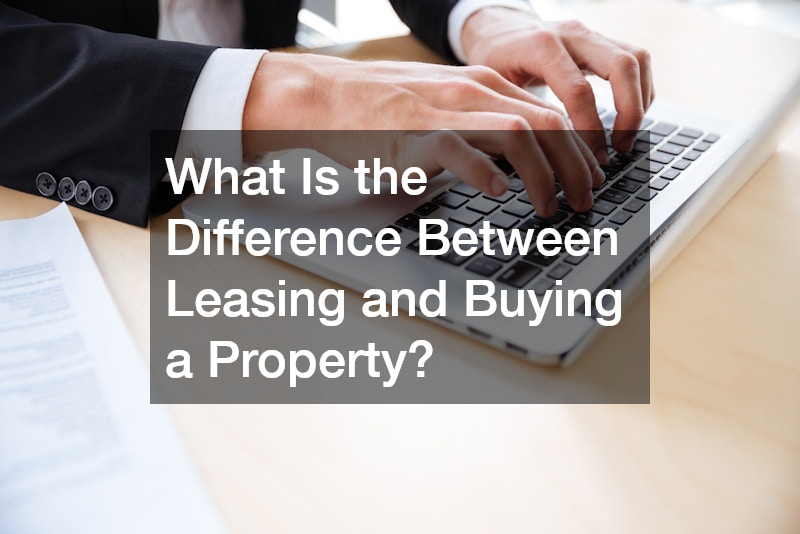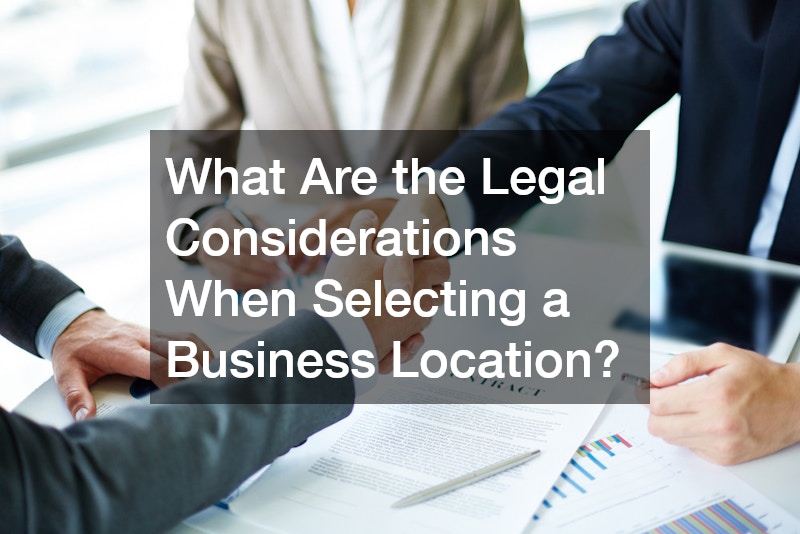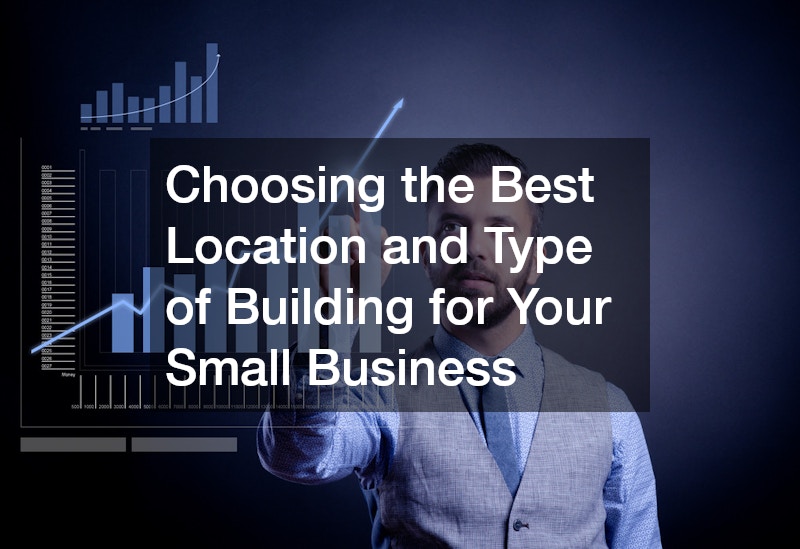
Selecting the right location and type of building is one of the most crucial decisions a small business owner can make. The location affects customer access, operational efficiency, and employee satisfaction. Similarly, the type of building influences brand image, functionality, and long-term growth potential. Careful planning ensures your business has a solid foundation for success. Using site selection solutions can help business owners evaluate factors such as accessibility, local demographics, and potential traffic patterns to make informed decisions.
What Factors Should I Consider When Choosing a Location for My Small Business?

Demographics and Target Market
Understanding the demographics of a potential location is essential. Consider age, income, lifestyle, and spending habits of the local population. Positioning your business where your target audience lives, works, or shops maximizes engagement. Analyzing demographic trends alongside site selection solutions helps ensure your business reaches the right customers. For example, a retail shop targeting young professionals may benefit from a location near apartment complexes or business districts.
Accessibility and Visibility
Accessibility is key to attracting both customers and employees. Locations near major roads, public transportation, and parking facilities are easier to reach. Visibility is equally important; high-traffic areas naturally draw attention and create brand awareness. Adding features like a commercial garage door with clear signage can enhance visibility for service-oriented businesses, while a preengineered steel building can offer both prominence and functionality in a high-traffic area.
Competition and Neighboring Businesses
Analyzing competitors and neighboring businesses provides insight into potential challenges and opportunities. Being close to complementary businesses can increase customer traffic, while high competition may require differentiation strategies. Partnering with nearby businesses, such as painters, paving contractors, or commercial roof repair services, can create mutually beneficial relationships and attract more customers.
Cost and Budget Considerations
Financial feasibility is a major factor in choosing a location. Rent, utilities, property taxes, and maintenance costs must align with your budget. While a prime location may be more expensive, it can also bring higher revenue. Costs for maintaining a roll off dumpster for waste management or paying for regular sealcoating of the parking lot are part of the operational expenses to consider. Budgeting for these services ensures the location remains functional and appealing.
Zoning Laws and Regulations
Before committing to a location, understand the zoning laws and regulations of the area. Certain zones may restrict the type of business activities, signage, or hours of operation. Compliance with local ordinances helps prevent legal issues and ensures smooth operations. Buildings like preengineered steel structures or those requiring commercial roof repair may have specific zoning requirements, making early research essential.
How Do I Determine the Right Type of Building for My Small Business?
Assessing Business Needs and Operations
Identify the operational requirements of your business. Consider the products or services offered, equipment needed, and workflow patterns. For example, a warehouse-style preengineered steel building may suit storage-heavy businesses, while a retail storefront with a commercial garage door may better accommodate customer access and deliveries. Understanding operational needs ensures the building supports efficiency and productivity.
Space Requirements and Layout
The layout of the space is as important as the square footage. Evaluate employee work areas, storage, customer seating, or service stations. Flexibility in design can accommodate future growth and evolving needs. Space planning may also include areas for roll off dumpster placement or vehicle access for delivery and maintenance services.
Sustainability and Energy Efficiency
Energy-efficient buildings reduce operating costs and appeal to environmentally conscious customers. Features like upgraded insulation, energy-efficient lighting, or solar panels lower utility bills and increase sustainability. Incorporating sustainable practices, such as eco-friendly sealcoating for exterior surfaces or energy-efficient commercial garage doors, reinforces a positive brand image.
Flexibility and Future Growth
Choose a building that allows for growth or operational changes. Open layouts, modular spaces, and adaptable infrastructure can prevent costly relocations or renovations. Preengineered steel buildings often offer modular design options that can expand as your business grows. Planning for future needs, including the addition of fire protection services or expansion of storage areas, is key to long-term success.
Aesthetic and Brand Image
The appearance of your building communicates your brand identity. A clean, well-maintained exterior attracts customers and reinforces credibility. Hiring painters to maintain the building’s exterior and ensuring the parking lot is properly sealcoated can elevate the overall look. Even functional elements like a commercial garage door or signage contribute to the perception of professionalism.
What Is the Difference Between Leasing and Buying a Property?

Initial Costs and Investment
Leasing generally requires lower upfront costs, covering deposits and initial rent. Buying involves larger initial investment, including down payments, closing costs, and potential renovations. Preengineered steel buildings can be more affordable to construct compared to traditional structures, affecting your decision between leasing and ownership.
Long-Term Financial Implications
Owning property can build equity and provide long-term benefits, while leasing incurs recurring costs without ownership. Evaluate how each option affects cash flow and business stability. Consider long-term maintenance, including commercial roof repair, sealcoating, or fire protection services, when comparing the financial implications.
Maintenance and Upkeep Responsibilities
Property ownership often includes maintenance, repairs, and improvements, whereas leasing may shift responsibilities to the landlord. Businesses may need to hire painters, paving contractors, or schedule regular commercial roof repair to keep the property in optimal condition. Factoring these responsibilities into budgeting ensures smooth operation and compliance with local regulations.
Flexibility and Control Over the Property
Leasing offers flexibility to relocate if business needs change, while ownership provides control over modifications. Businesses that require customized layouts, garage door installation, or additional storage might prefer ownership. Flexibility also matters for service businesses needing space for roll off dumpster access or delivery vehicles.
Pros and Cons of Each Option
Leasing reduces financial risk and initial cost but limits customization. Ownership allows full control and long-term equity but requires higher upfront investment and ongoing maintenance. Weighing these factors against operational needs and growth projections ensures a sustainable choice.
How Important Is Foot Traffic for My Retail Business?
Understanding Foot Traffic Patterns
Foot traffic indicates potential customer exposure. High-traffic locations increase visibility and sales, while low-traffic areas require additional marketing. Businesses using site selection solutions can analyze pedestrian patterns to identify optimal locations.
Measuring Foot Traffic and Its Impact
Accurate measurement through sensors, counters, or third-party data helps estimate potential revenue. High foot traffic areas often justify higher rent, as the increased exposure translates into sales opportunities. Observing competitor traffic can also reveal prime locations for retail operations.
Strategies to Increase Foot Traffic
Businesses can attract more customers through signage, local promotions, and community engagement. Elements like a visually appealing commercial garage door, freshly painted exteriors, or a well-maintained parking lot with sealcoating can improve curb appeal and invite visits.
Balancing Foot Traffic with Online Presence
Even with strong foot traffic, a robust online presence is essential. Integrating e-commerce platforms, social media, and local search visibility ensures consistent engagement and customer access beyond physical location. Businesses offering specialized services may use online channels to complement in-person visits, creating a hybrid model that maximizes reach.
Analyzing Competitor Foot Traffic
Monitoring competitor activity provides insight into potential foot traffic trends. High activity in neighboring areas can indicate demand, while careful differentiation ensures you capture market share. Complementary services like painters or paving contractors nearby may increase incidental traffic to your business.
What Role Does Technology Play in Choosing a Business Location?
Internet and Connectivity Requirements
Reliable internet is essential for modern operations. Locations must support high-speed connections and redundancy. Technology infrastructure supports POS systems, remote management, and e-commerce activities. Businesses that rely on cloud-based operations or remote communication must prioritize connectivity when evaluating locations.
Technology Infrastructure
Beyond basic connectivity, consider smart building features such as automated lighting, security cameras, or access control. These features improve efficiency and safety, particularly in larger spaces like preengineered steel buildings or multi-unit commercial properties.
Smart Building Features
Investing in smart building elements like energy management systems or intelligent security can reduce operational costs and enhance employee and customer experience. Fire protection services integrated into the building’s infrastructure add both compliance and peace of mind.
Data Security and Privacy Considerations
Business operations often involve sensitive customer data. A location with proper infrastructure for secure networks and privacy measures is crucial, particularly if you handle online transactions or digital records. Controlled access via commercial garage doors or monitored entrances can further protect assets.
Technology for Remote Work Capabilities
Hybrid business models benefit from technology-friendly locations that allow remote work. Dedicated IT infrastructure ensures seamless communication between onsite and remote employees, improving productivity and flexibility.
How Does a Location Impact Employee Satisfaction and Retention?

Proximity to Public Transport
Locations accessible by public transit or main roads improve employee convenience. Easy commuting options reduce stress, increase punctuality, and enhance overall job satisfaction.
Availability of Amenities
Nearby amenities, including restaurants, banks, and gyms, enhance the attractiveness of a workplace. Businesses located in vibrant areas may have an easier time recruiting and retaining talent.
Workplace Environment and Culture
The physical environment impacts employee morale. Spacious preengineered steel buildings or buildings with flexible layouts allow for collaborative workspaces. Well-maintained interiors, including fresh painting and functional facilities, create a welcoming culture.
Commute Times and Their Effect on Productivity
Long commutes negatively affect productivity and retention. A strategic location reduces commute time, ensuring employees arrive energized and engaged. Facilities with accessible parking maintained through sealcoating and proper paving help further ease daily operations.
Location-Based Employee Perks
Businesses can enhance satisfaction by offering location-related benefits, such as secure bike storage, onsite parking, or convenient access to public services. The building type and layout, including areas for deliveries or roll off dumpster placement, also affect employee convenience.
How Can I Evaluate a Neighborhood’s Safety for My Business?
Crime Rate Statistics
Researching local crime rates is essential for protecting employees, customers, and assets. Lower crime areas often translate into reduced insurance premiums and a more comfortable environment.
Security Features of the Area
Assess whether surrounding properties have security measures like surveillance or lighting. Features like commercial garage doors with access control add an extra layer of protection for both staff and inventory.
Community and Neighborhood Watch Programs
Active neighborhood programs can enhance safety and foster a sense of community. Businesses can participate in or collaborate with these programs to reinforce security.
Impact of Safety on Business Reputation
A safe, well-maintained location improves brand perception and attracts customers. Conversely, a high-crime area may deter clients and impact long-term growth.
Insurance Considerations and Costs
Insurance premiums often reflect neighborhood safety. Buildings requiring commercial roof repair, adequate fire protection services, or reinforced security features may qualify for lower rates, reducing overall operating expenses.
Should I Consider Online Presence When Selecting a Physical Location?
Integrating Online and Offline Business Models
Physical locations complement online operations. Retailers and service providers benefit from hybrid models where in-store experiences reinforce online branding.
Establishing a Local Search Presence
Choosing a location that enhances local search visibility allows businesses to attract nearby customers. Incorporating neighborhood references in marketing strategies improves discoverability.
Social Media and Local Community Engagement
Engaging with the community online builds brand loyalty and drives foot traffic. Highlighting local services, partnerships with painters, paving contractors, or commercial roof repair providers can strengthen local ties.
E-Commerce Capabilities
Businesses with e-commerce operations benefit from locations with robust delivery access. A roll off dumpster, commercial garage door, or loading dock improves shipping and receiving efficiency.
Online Reputation Management
Maintaining a positive online reputation supports physical location success. Customer reviews and social engagement can influence foot traffic and overall business perception.
How Do I Assess the Competition in a Potential Location?
Market Research and Analysis
Analyzing competitors in the area provides insight into demand and market saturation. Identify both direct and indirect competitors to evaluate opportunities for differentiation.
Identifying Direct and Indirect Competitors
Direct competitors offer similar products or services, while indirect competitors meet the same customer needs in alternative ways. Understanding both helps refine pricing and service strategies.
Competitive Advantage and Differentiation
Offer unique features like superior service, specialized equipment, or enhanced facilities such as preengineered steel buildings with modern fire protection services. This ensures your business stands out.
Monitoring Competitor Strategies
Track competitors’ promotions, hours, and customer engagement. Businesses that collaborate with complementary providers, including painters, paving contractors, or commercial garage door installers, can benefit from shared networks.
Collaborations and Partnerships
Strategic partnerships improve market reach. Working with commercial roof repair specialists or sealcoating providers can create bundled services and community recognition.
What Are the Legal Considerations When Selecting a Business Location?

Understanding Lease Agreements and Contracts
Review all contracts carefully, whether leasing or buying. Clauses regarding modifications, maintenance, and insurance are critical, especially when installing commercial garage doors or performing site work.
Compliance with Local Ordinances and Permits
Ensure the business adheres to zoning, construction, and operational permits. Preengineered steel buildings or renovations often require additional approvals.
Trademark and Zoning Disputes
Avoid conflicts by verifying trademarks and zoning restrictions. Legal compliance ensures uninterrupted operations and protects the brand.
Construction and Renovation Compliance
Renovations, including fire protection services, exterior painting, or sealcoating, must meet safety codes and regulations. Hiring licensed professionals minimizes liability and ensures quality.
Legal Resources and Assistance
Consulting legal experts can clarify obligations related to property, building use, and neighborhood regulations. This safeguards your business during setup and future expansion.
Closing Thoughts
Choosing the right location and type of building requires careful planning, research, and consideration of both operational and financial factors. By analyzing demographics, accessibility, competition, and building functionality, business owners can make informed decisions. Integrating services like commercial roof repair, preengineered steel buildings, roll off dumpsters, commercial garage doors, sealcoating, and fire protection services ensures operational efficiency and brand credibility. Ultimately, a well-chosen location and building create a strong foundation for small business success.



